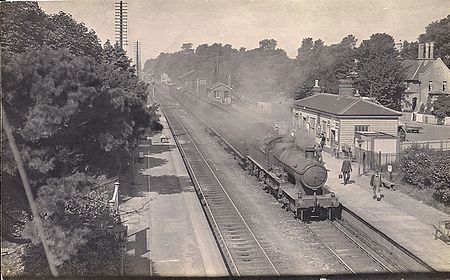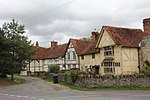Steventon railway station
Beeching closures in EnglandDisused railway stations in OxfordshireFormer Great Western Railway stationsGreat Western Main LinePages with no open date in Infobox station ... and 3 more
Railway stations in Great Britain closed in 1964Railway stations in Great Britain opened in 1840Use British English from December 2017

Steventon railway station was built when the Great Western Railway extended their main line from Reading to the village of Steventon, opening the line on 1 June 1840. Two months later, on 20 July, it was extended to Faringdon Road, and in December of that year, to Swindon.
Excerpt from the Wikipedia article Steventon railway station (License: CC BY-SA 3.0, Authors, Images).Steventon railway station
Station Yard, Vale of White Horse
Geographical coordinates (GPS) Address External links Nearby Places Show on map
Geographical coordinates (GPS)
| Latitude | Longitude |
|---|---|
| N 51.6215 ° | E -1.3188 ° |
Address
Steventon
Station Yard
OX13 6RX Vale of White Horse
England, United Kingdom
Open on Google Maps






